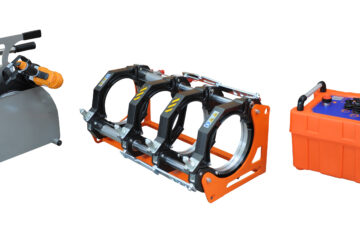Key Takeaways:
- Lifeline programs offer discounts on communication services for low-income households.
- Eligibility is based on household income or participation in qualifying assistance programs.
- Understanding the criteria and application process is crucial for maximizing benefits.
Table of Contents:
- Introduction
- Eligibility Criteria Overview
- Defining a Household
- Income Guidelines
- Qualifying Assistance Programs
- The Application Process
- Conclusion
Introduction
Lifeline programs ensure that low-income households can access affordable communication services. These programs offer essential discounts on telephone and broadband services, making it more feasible for families to stay connected. Understanding household eligibility for Lifeline discounts is critical to benefiting from these critical programs. This article will dissect the eligibility criteria, including household definitions, income guidelines, and qualifying assistance programs, providing a straightforward guide on navigating the application process successfully.
The importance of these programs cannot be overstated, especially in today’s interconnected world, where communication is vital for accessing education, healthcare, and employment opportunities. Lifeline programs aim to bridge the gap for low-income households, ensuring everyone can participate in the digital economy and stay connected with essential services.
Eligibility Criteria Overview
Lifeline program eligibility is primarily determined through two main criteria: household income and participation in qualifying assistance programs. By meeting either of these benchmarks, households can apply to receive discounted communication services. Understanding these eligibility factors is the first step towards accessing Lifeline benefits.
These programs are designed to aid those who need it most. Therefore, pinpointing accurate eligibility helps in the optimal allocation of resources. Through enhanced communication tools, households that qualify can experience financial relief and an improved ability to manage various aspects of their daily lives.
Defining a Household
A crucial aspect of Lifeline eligibility is clearly defining what constitutes a household. A household generally includes individuals living at the same address who share income and expenses. It’s important to understand that even family members living together may be considered separate households if they do not share income. In addition, the Lifeline household worksheet is valuable for accurately determining household status and ensuring the correct classification of members residing within an address. This worksheet simplifies the complexities of defining household status, making it easier for applicants to determine their eligibility.
Understanding what classifies as a household helps avoid confusion during the application process. Sometimes, households consist of roommates or multiple families living under one roof, but these can be considered separate households if they manage their incomes independently. Accurately defining your household according to Lifeline’s criteria ensures you receive the fair benefits you qualify for.
Income Guidelines
Families earning up to 135% of the Federal Poverty Guidelines qualify for Lifeline discounts. The specific income thresholds can vary depending on the household size and the state of residence. For example, a more enormous household will have a higher income threshold than a smaller one. These guidelines are put in place to ensure that the Lifeline program benefits those who need it most, providing essential support to low-income households.
By adhering to these income guidelines, Lifeline ensures that assistance is offered to those who need it most. Applicants should understand how their income relates to these guidelines, as this helps streamline the eligibility verification process. Moreover, the policies are periodically updated to reflect economic changes, so it is essential to have the most current information when applying.
Qualifying Assistance Programs
Participation in specific federal assistance programs can also qualify households for Lifeline discounts. Medicaid, SNAP (Supplemental Nutrition Assistance Program), and SSI (Supplemental Security Income) are commonly used as qualifying criteria. By participating in these programs, households automatically meet the eligibility requirements for Lifeline, providing an additional pathway to access affordable communication services. Other qualifying programs may vary by state, so it’s recommended to check specific state guidelines for a comprehensive list.
These federal assistance programs serve as a testament to a household’s financial needs. Participating in these programs makes it easier for applicants to verify their eligibility, making the application process more straightforward. Qualifying through assistance programs also ensures that support reaches the households already recognized as needing financial help, thereby reinforcing the inclusivity and effectiveness of the Lifeline program.
The Application Process
The application process for Lifeline discounts is straightforward but requires careful attention to detail to ensure eligibility is adequately documented. Here are the steps to follow:
- Verify Eligibility: Determine your eligibility based on income or participation in qualifying assistance programs. Gather all necessary documentation to prove eligibility.
- Select a Provider: Choose a Lifeline service provider in your area. Different providers may offer various plans and services, so select one that best meets your needs.
- Complete the Application: Fill out the Lifeline application form provided by your selected service provider or through the Lifeline National Verifier. Ensure all information is accurate and complete.
- Submit Documentation: Provide the required documentation to substantiate your eligibility. This may include income statements or proof of participation in qualifying assistance programs.
Following these steps will help ensure that your application is processed efficiently and without unnecessary delays, allowing you to start benefiting from Lifeline discounts as soon as possible. Keeping it’s copies of any submitted documentation for your records is also recommended, which can be helpful if any follow-up is required.
Additional tips for a successful application include double-checking all entered information for accuracy and completeness. Errors or omissions can cause delays or even result in application denial. Being thorough and precise in your application helps to avoid these setbacks and facilitates a quicker approval process.
Conclusion
Understanding household eligibility for Lifeline discounts is essential for low-income families seeking affordable communication services. By meeting the criteria based on income or participation in qualifying assistance programs, households can benefit from these vital services. The application process, while straightforward, requires careful attention to detail and proper documentation. Utilizing resources like the Lifeline household worksheet can aid in accurately determining household status and ensuring a smooth application process. By accessing Lifeline discounts, households can stay connected and access the opportunities and services they need to thrive.
By effectively leveraging these programs, low-income households can alleviate some of their financial burdens associated with communication costs, making other essential expenses more manageable. Lifeline programs provide immediate economic relief and contribute to long-term improvements in quality of life. Whether staying in touch with loved ones, accessing emergency services, utilizing telehealth, or participating in remote education, Lifeline discounts allow everyone to partake in these crucial aspects of modern life.
Stay in touch to get more updates & news on Webofbuzz!




